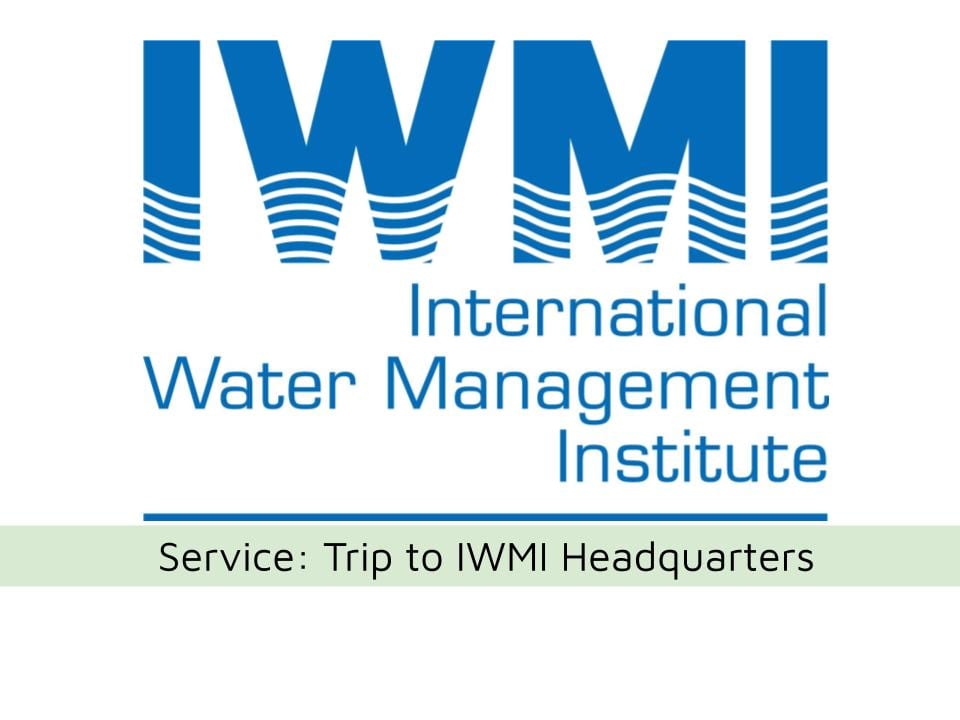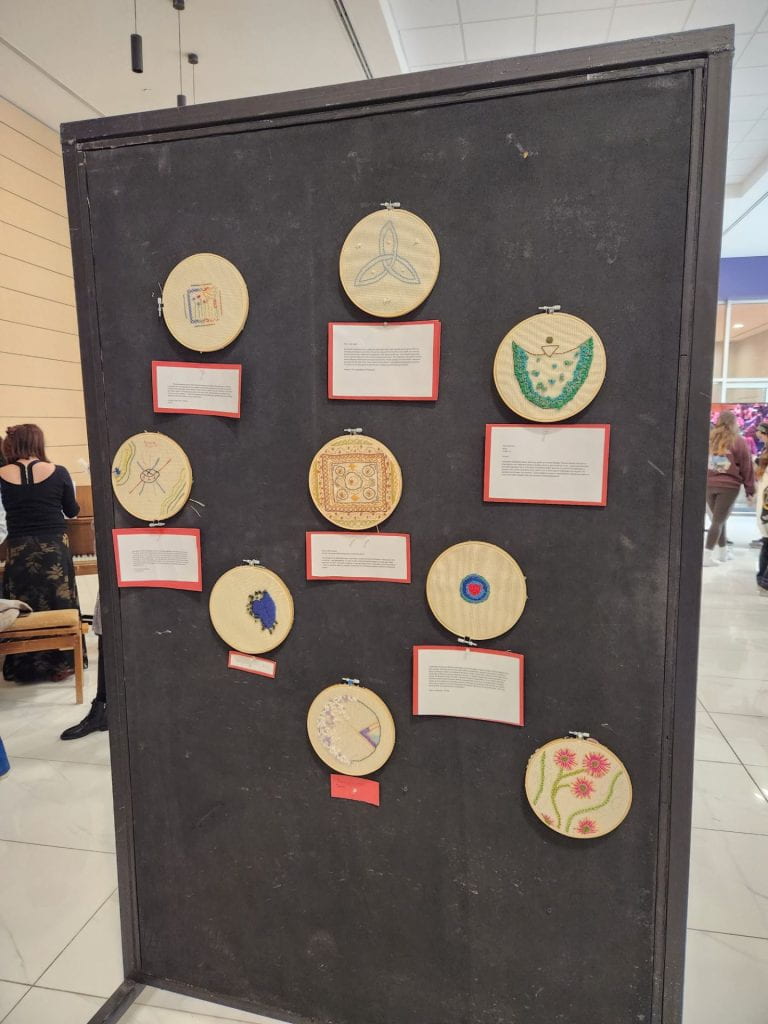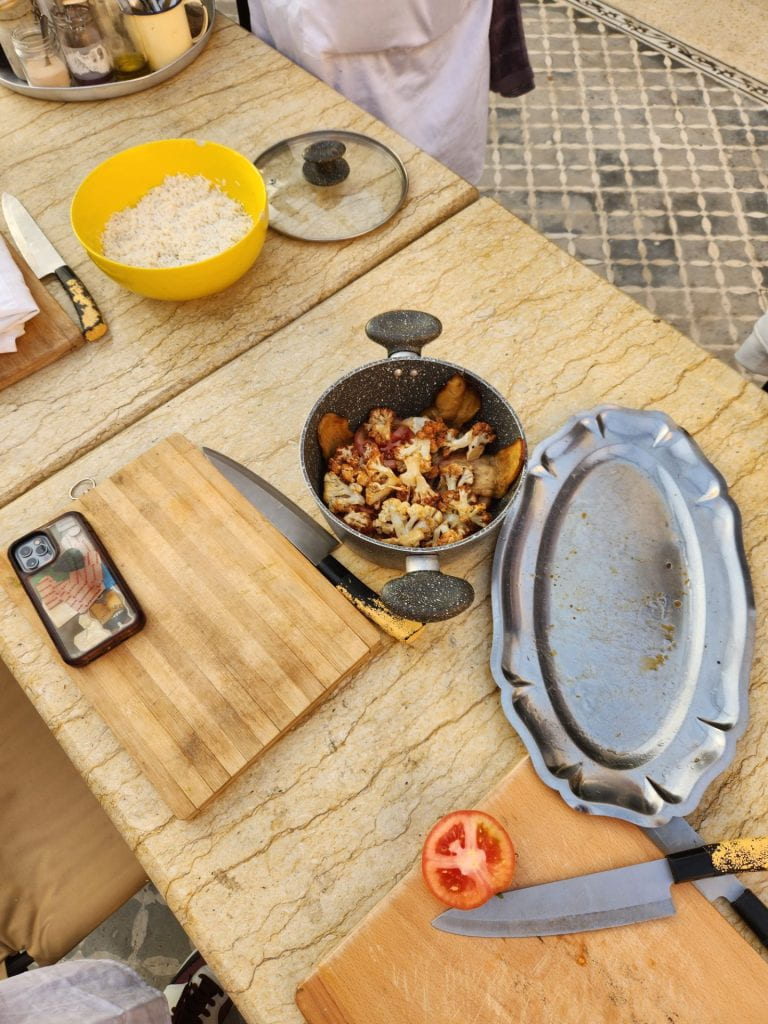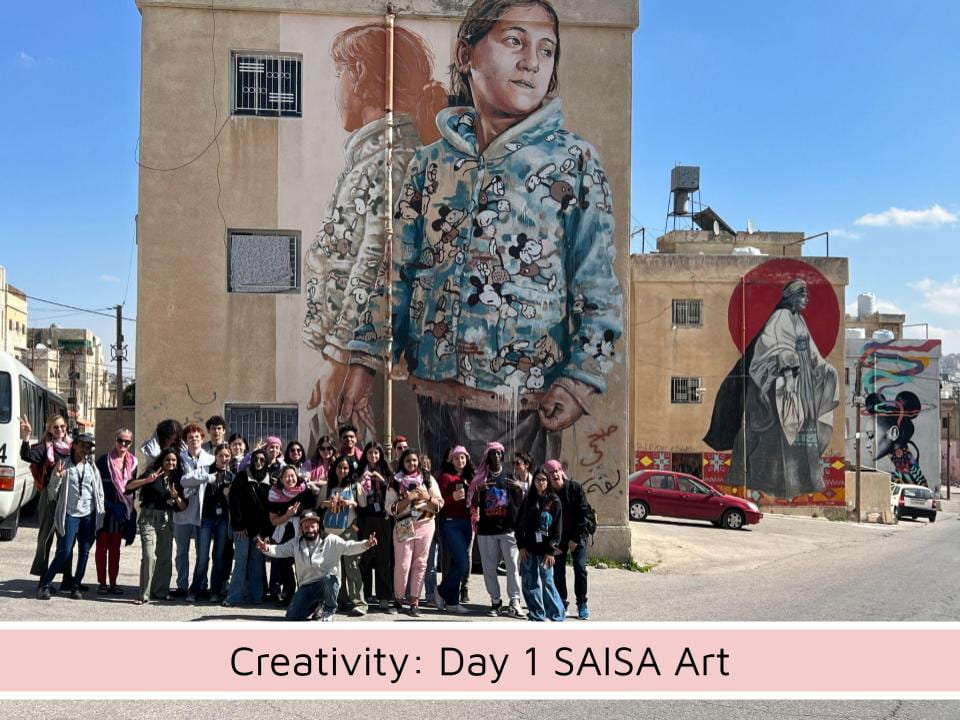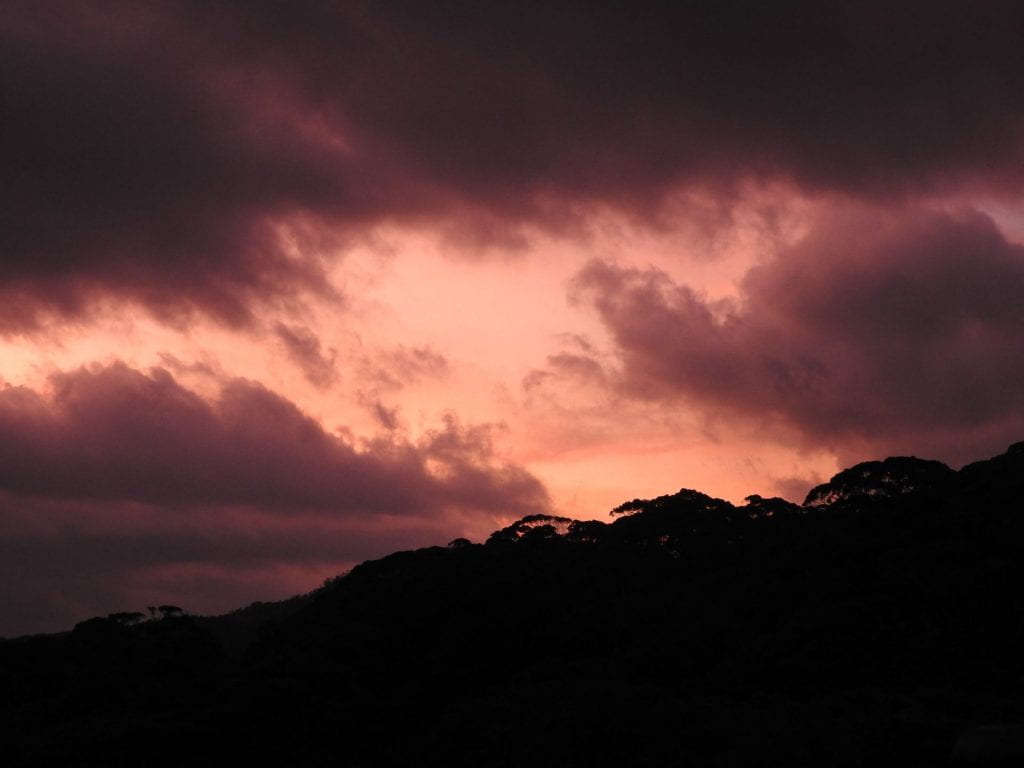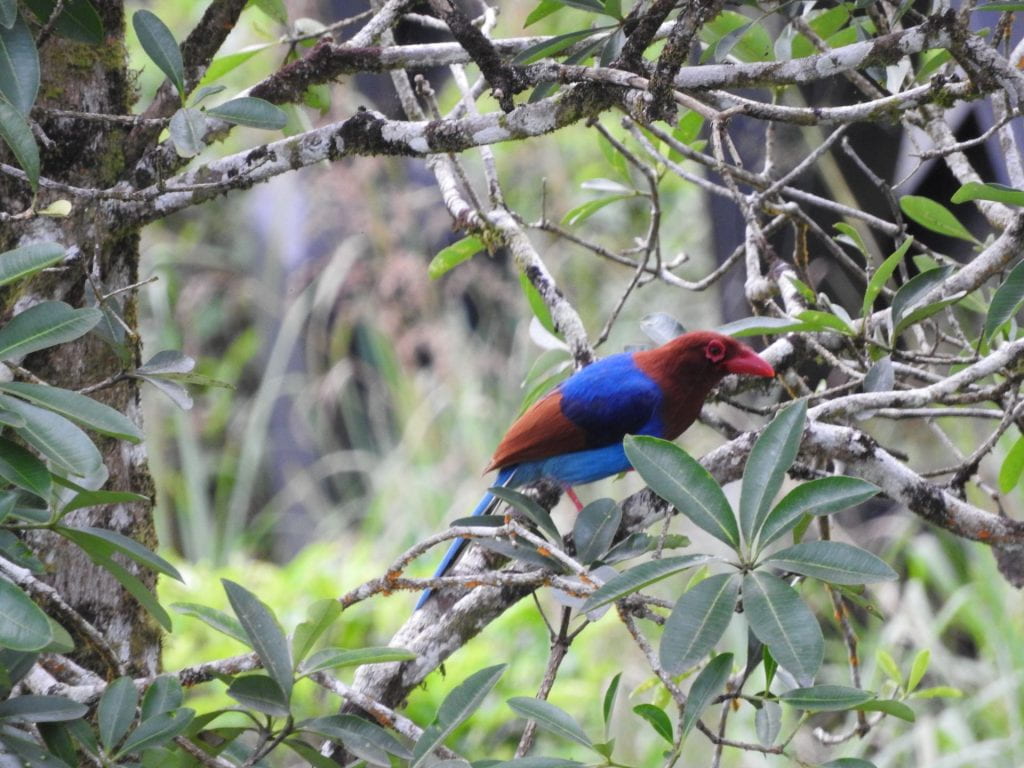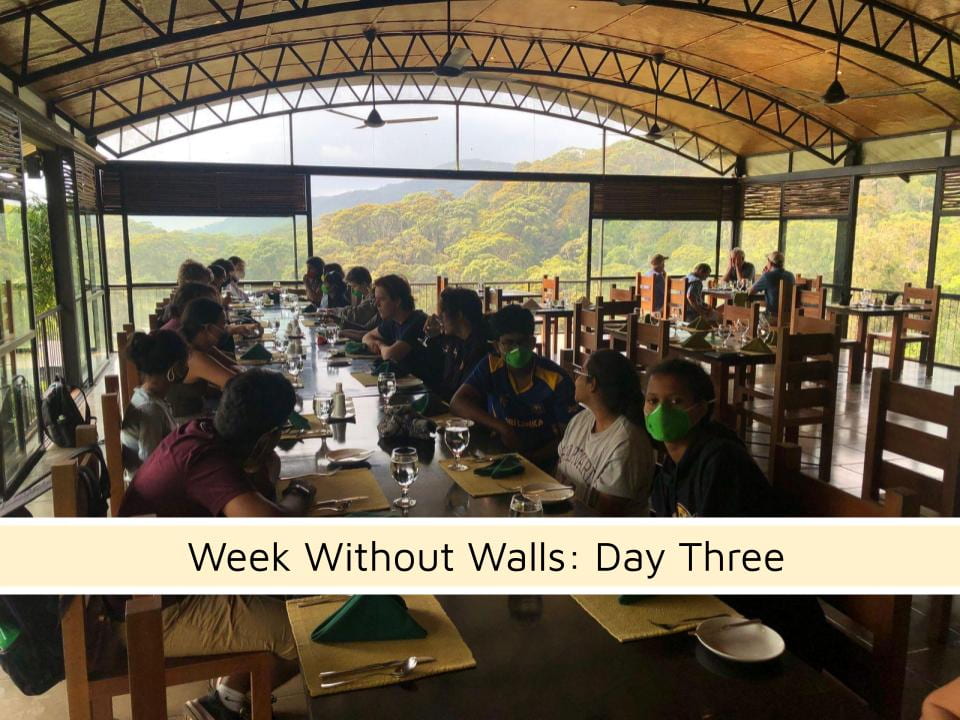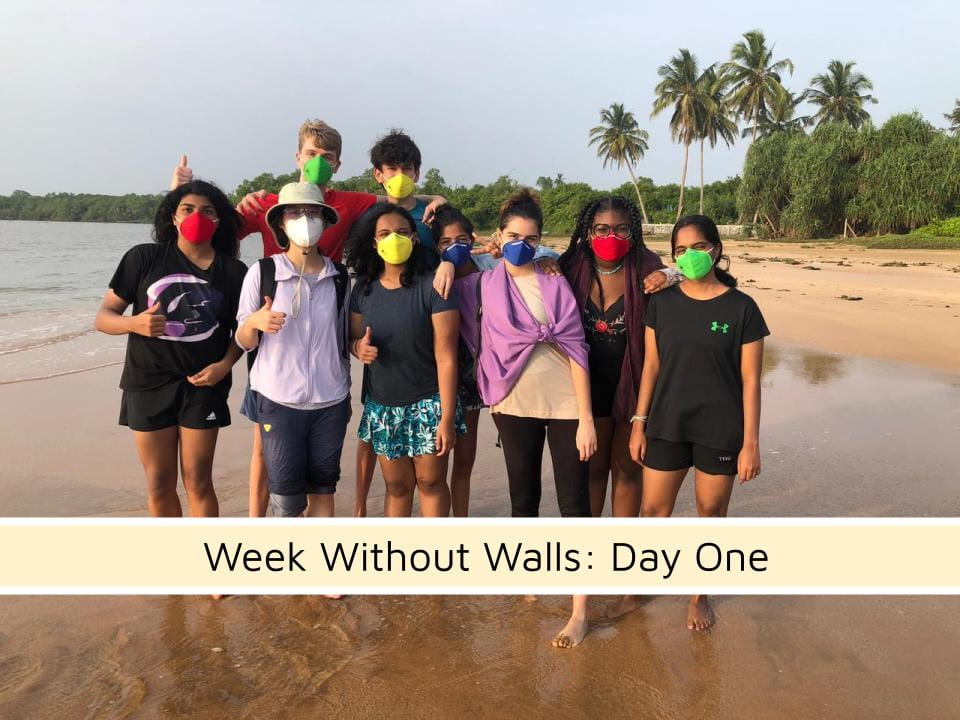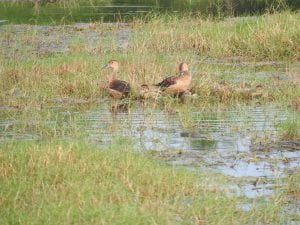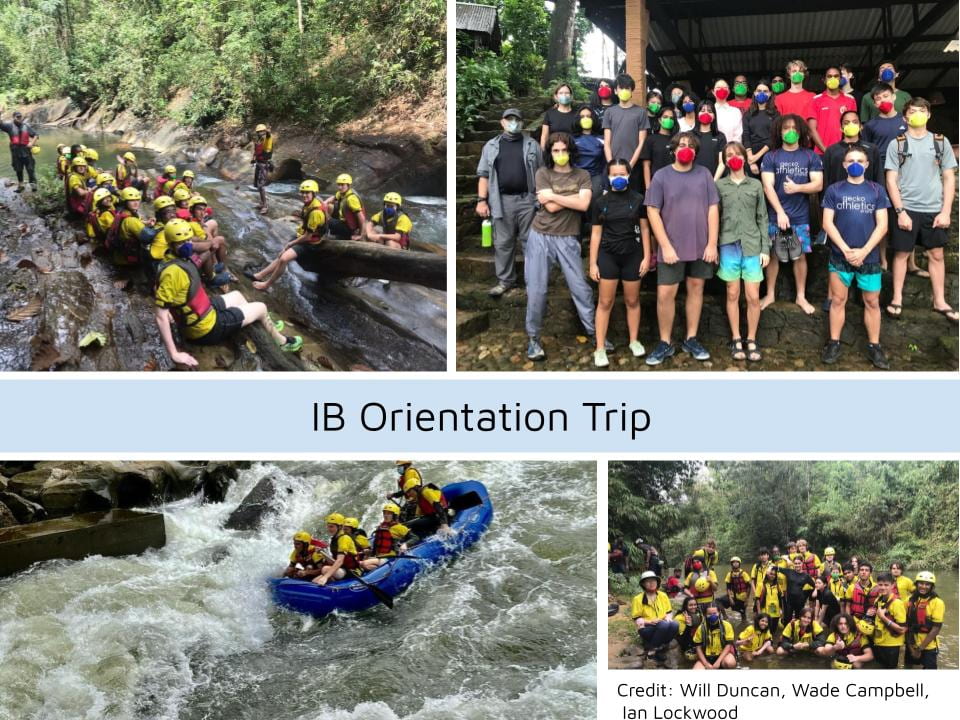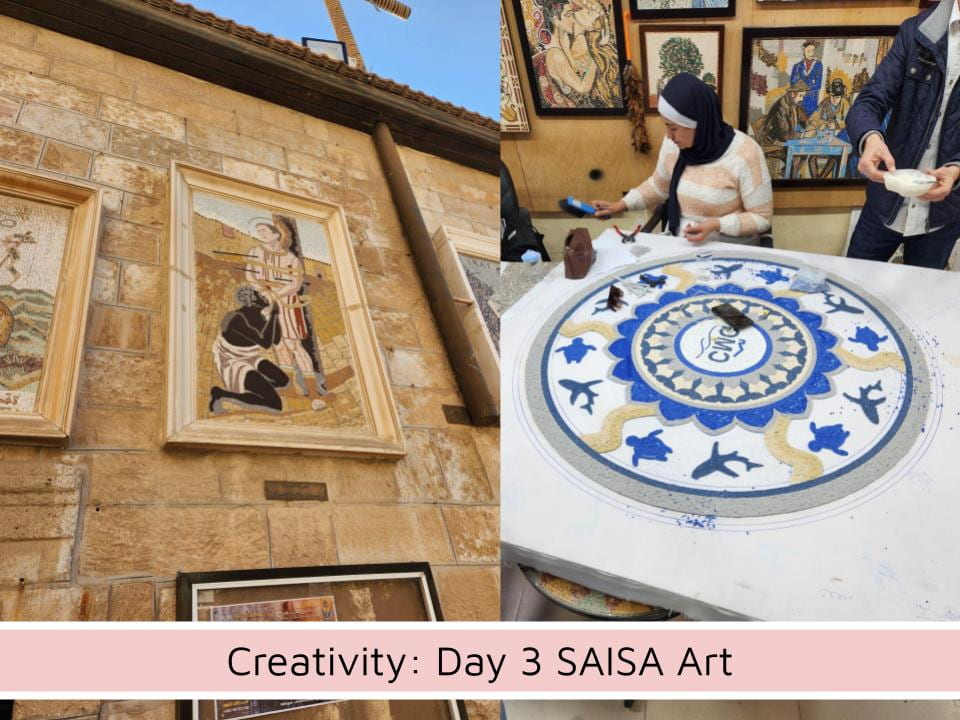
Summary of SAISA Day 3:
Day three of SAISA art was our final day in Jordan. We began by celebrating the art we had created in our workshops on day 2. My group embroidery displayed our artwork by hanging them up on a wall down in the auditorium. Each of the participants also had to create an artist statement, which is similar to an artistic intention, which we often create in visual art. We got to see what the other workshops produced. I found the printmaking group particularly interesting, as they combined several techniques to create a print of the citadel, a landmark we visited on day one. After admiring each other’s art, everyone went into the buses to Mount Nebo. Mount Nebo is where Moses was granted a view of the promised land, before his death. From the landmark, you can see the dead sea, the west bank, and Jerusalem. We had lunch at Mount Nebo. We then attended a mosaic workshop, in which we were able to see how mosaics were made in Jordan. The owner of the mosaic store gave all students a 30% discount on all products.
We then visited several Christian churches. My personal favourite was the Church of St John the Baptist. This church had a large clock tower which you could climb up to with ladders. Additionally, there was a tunnel system underneath the church. After visiting the churches, we had a farewell meal at a restaurant that served a variety of local dishes. We arrived back at ACS at around 6 pm. Since our flight was for 1 am, we got permission to spend 3 hours at the Taj mall beforehand.
At 9:30 we left for the airport and slept in the check-in aisle as our flight had been delayed. We arrived back at OSC at 5 pm after 2 flights and a layover in Doha.
Learning Outcomes:
#1 Identify your strengths and develop areas for personal growth.
#2 Demonstrate that challenges have been undertaken, developing new skills in the process.
#5 Demonstrate the skills and recognize the benefits of working collaboratively.
Photos of SAISA Day 3:


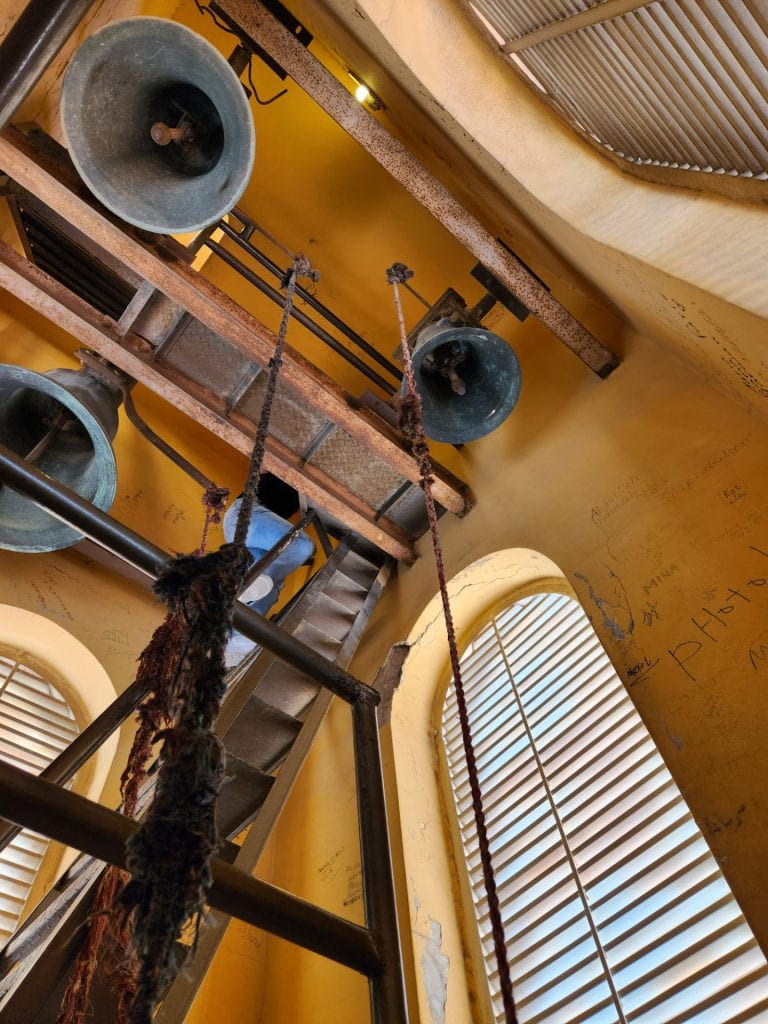
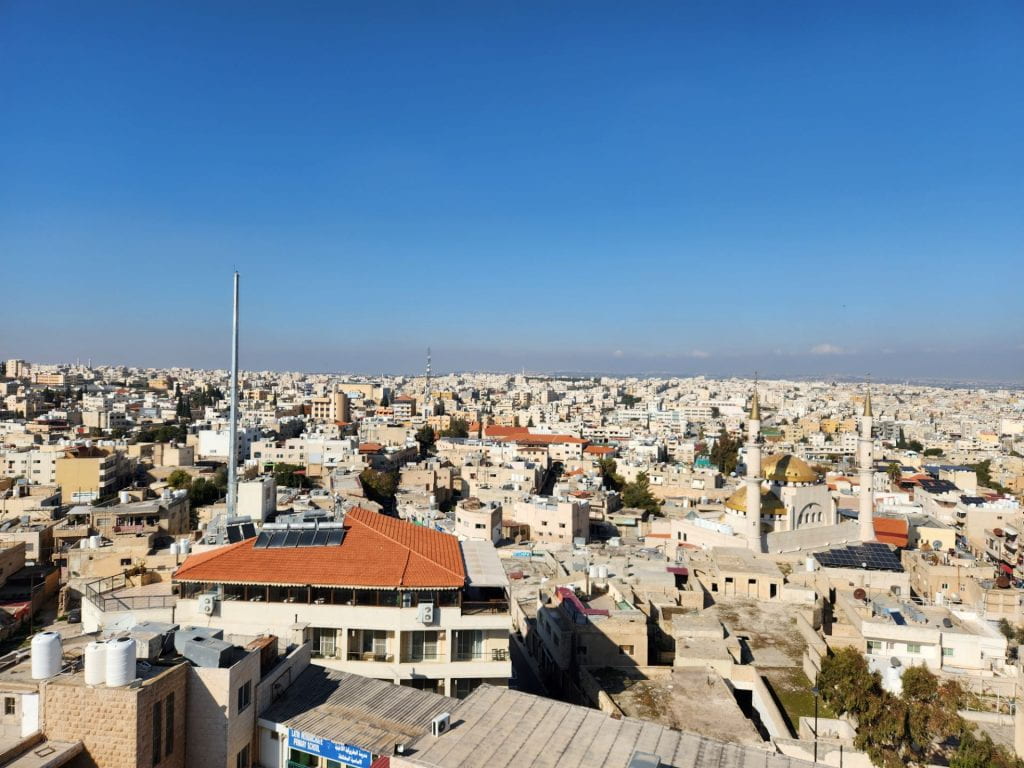
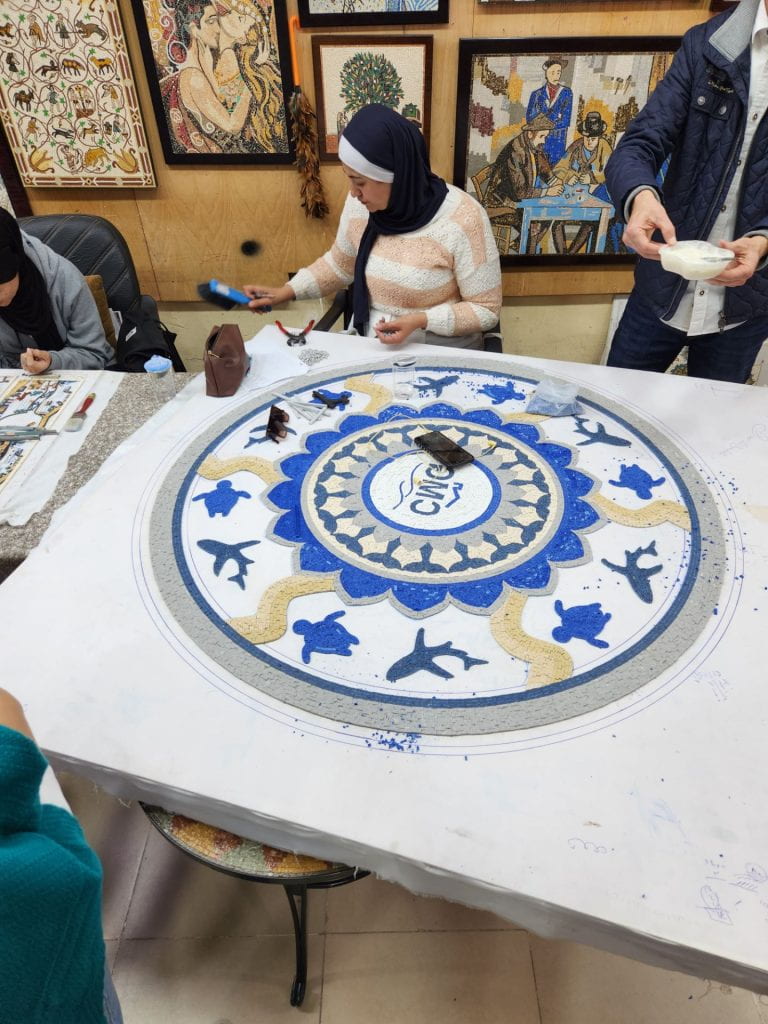
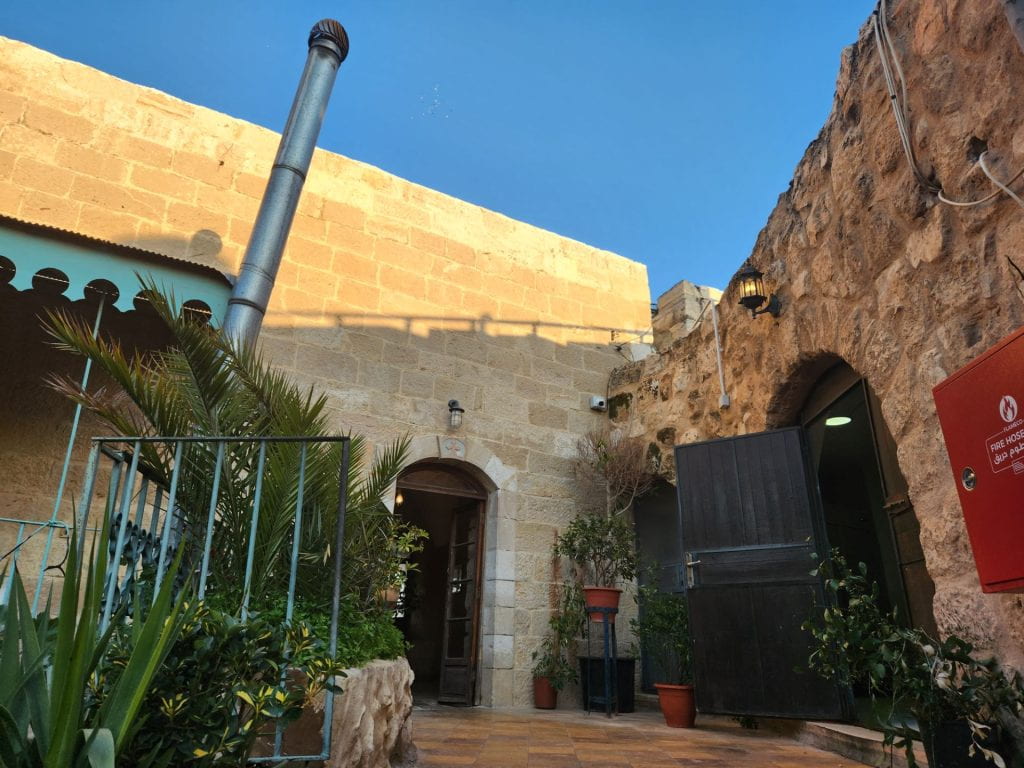
.
